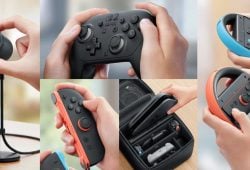Many customers still prefer brick-and-mortar stores, not because of their friction points but despite them. Over half of consumers, 60%, prefer in-person shopping because of the immediacy of having an item in the moment, while 61% prefer in-store shopping because of the ability to see or try on items (Zippia, 2023).
For years, retailers have tried to reduce as much friction from in-store shopping as possible. The pandemic significantly accelerated this since retailers had to make the online experience interactive and engaging. Finding ways to incentivize the purchase of “not on the list” items without being able to clutter clients’ minds through storefronts, big red or yellow sale signs, or simply in-store layouts. Online shopping presented a considerable challenge for brick-and-mortar stores to survive. Nevertheless, when stores re-opened, shoppers were ready to go back because of the unique experience they offer. Yet, expectations had changed.
Online shopping considerably simplifies the experience. There’s no time spent in-store looking for specific items or their availability in a particular color or size, no having to carry stuff while looking around, and no checkout lines.
Returning to in-store purchases meant a shift from simply shopping to having a rounded experience. Shoppers want to socialize. They want to see what others are purchasing, grab a coffee afterward, try on different items, be sure of what they are buying, and discover new pieces, besides the apparent advantage of instantly receiving their items.
Considering this, retailers leveraged the technology they developed to enable more self-serve capabilities. For instance, allowing customers to identify the location of items in the store through the mobile app, using the app to track purchase history instead of using physical receipts, QR codes for customers to view size and color availability, online checkout, in-store pick-up, and so on.
Looking at the advances that eCommerce and technology have enabled for in-store shopping, the future will involve more emerging technologies, AI, and digitization, leading to a continuous evolution in the shopping experience.









